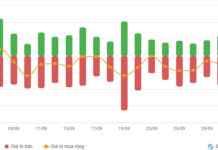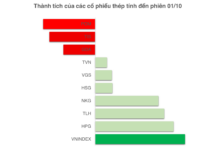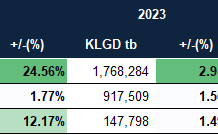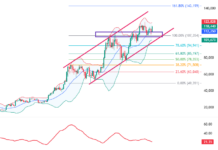At the seminar “The Vietnamese Wood Industry in the Face of Export Market Changes,” organized by the timber associations (including VIFOREST, BIFA, HAWA, DOWA, and FPA Binh Dinh) in collaboration with Forest Trends on December 6 in Hanoi, Mr. Do Xuan Lap, Chairman of the Vietnam Timber and Forest Products Association (VIFOREST), shared that the United States is the most important export market for Vietnam’s wood industry.
It is forecasted that in 2024, the export of timber and wood products from Vietnam will reach over $16.2 billion, of which exports to the US will account for 56% of the total export turnover, reaching nearly $9 billion, and imports from this market will be over $230 million.
TRENDS TOWARDS SUPPLY CHAIN RELOCATION AND INCREASED COMPETITION
Going forward, under the presidency of Donald Trump, the US is expected to implement strong economic protectionist policies, including increasing import taxes by 15-20% for many countries and up to 60% for goods from China. As the largest export market for Vietnam, these changes will pose significant challenges for the timber industry, according to Mr. Lap.

First, there will be increased competitive pressure. Vietnamese wood products will face direct competition from US domestic products and goods from other countries.
Second, Vietnam will face trade risks and may be subject to punitive tariffs due to the situation of Chinese goods being disguised as Vietnamese origin.
Third, with the trade surplus between Vietnam and the US surpassing $100 billion in 2024, Vietnam is at risk of becoming a target for anti-dumping investigations or other restrictive measures.
“Competitiveness means meeting market demands, such as transparent production, ensuring traceability, complying with regulations of importing countries… while also having the capacity to supply products that meet market demands, with attractive designs and reasonable prices.”
Mr. Do Xuan Lap, Chairman of Vietnam Timber and Forest Products Association (VIFOREST)
According to Mr. Lap, despite the challenges, the policy changes in the US and globally also present significant opportunities for Vietnam’s wood industry. With high tariffs on Chinese products, international businesses tend to relocate their supply chains to neighboring countries, with Vietnam being a potential destination. This not only promotes FDI but also expands export opportunities for the Vietnamese wood industry.
Additionally, the US infrastructure and industrial promotion policies, along with the “green shopping” trend, create opportunities for wood businesses to meet the demand for sustainable building materials and furniture. Vietnam is focusing on exporting value-added products such as furniture (accounting for 41% of export turnover in the first nine months of 2024), reducing dependence on raw material exports such as wood chips.
Presenting a thesis on “Some Issues on US Trade Policy,” Dr. Huynh The Du, Lecturer and Program Manager of Public Policy and Environment at Indiana University, USA, argued that the opportunities for Vietnam arising from the future President Donald Trump’s policies include increased exports to the US due to the trade war between the US and China, attracting foreign investment as US businesses relocate their production out of China, and promoting product quality improvement to meet US requirements.
However, along with these opportunities come certain risks for Vietnam. Firstly, there is pressure from trade remedy measures. Specifically, the Vietnamese wood industry faces the risk of being subjected to anti-dumping or countervailing duties. The US may investigate and impose taxes if it detects origin fraud or transshipment from third countries. Secondly, there is increased competition from other suppliers.
“Countries like Malaysia, Indonesia, and Thailand can take advantage of the situation to increase their wood exports to the US, putting competitive pressure on Vietnamese products. At the same time, the US is also strengthening support for its domestic wood industry to reduce dependence on imports,” analyzed Dr. Du.
ENHANCING COOPERATION, DIALOGUE, AND FOCUSING ON VALUE-ADDED PRODUCTS
To help Vietnamese wood businesses reduce the trade imbalance, as the industry’s export surplus in this market reached $8.8 billion, Dr. Du offered two key recommendations.
First, Vietnamese enterprises need to increase direct investment in the US market, enhance trade/linkages, and cooperate with US businesses. This is also an opportunity for wood businesses to expand their direct distribution network in the US market.
Second, Vietnam should create even more favorable conditions for US investors in the Vietnamese market.

Speaking at the seminar, Dr. To Xuan Phuc from Forest Trends analyzed the landscape of the wood industry in the context of Vietnam-US relations and provided insights into potential shifts in the Trump administration’s policies. Specifically, he mentioned supply chain relocation, capital flow relocation from China to other countries, and immigration trends.
Based on these observations, Dr. Phuc recommended that the Vietnamese wood industry should enhance cooperation and dialogue. Close coordination between businesses, associations, and government agencies is crucial to finding timely solutions to the US trade protectionist policies. In particular, the Certificate of Origin (CO) is an important tool to combat trade fraud.
Moreover, the wood industry needs to enhance the value of its products by focusing on manufacturing high-value-added items such as kitchen furniture, seating, and other wooden furniture to meet market trends. Investing in sustainability: Vietnam should develop “green” factories and comply with international environmental standards to enhance its competitiveness in the global market.
To prepare for trade risks, businesses should be ready to face anti-dumping investigations or other trade remedy measures from the US by improving their legal capacity and risk management capabilities.
“With its production capacity and support from domestic policies, Vietnam’s wood industry is expected to continue thriving and solidifying its position in the international market in the long term. Looking ahead, if it can seize the opportunities arising from global investment and trade shifts, the Vietnamese wood industry has the potential to become a leading wood processing and export hub in the region.”
Dr. To Xuan Phuc, Forest Trends
Additionally, strengthening supply chain management is crucial: businesses need to invest in digital transformation and build transparent traceability systems to meet the requirements of international regulations such as the EUDR.






































